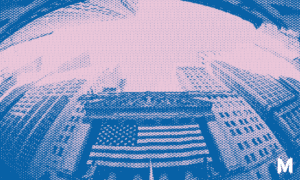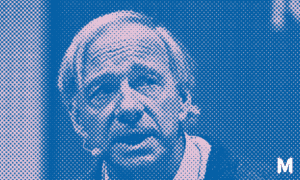U.S. stock market indexes fell as the Federal Reserve increases the interest rate.
- The S&P 500 and Dow each fell roughly 1.5%, while tech-heavy Nasdaq collapsed closer to 1.3% as of 12:50 pm ET.
- Hyperinflation.
- Oil prices are going low.
- JP Morgan misses on Q2 earnings.
After the U.S. consumer price index revealed inflation hitting 9.1% yesterday, the U.S. stock market opened with its stock indexes falling, indicating a large number of companies losing values/prices on their shares.
Reportedly, around 12:24 p.m. ET, the Dow was down 343.97 points, or 1.12%, at 30,428.82 and the S&P 500 was down 40.15 points, or 1.06%, at 3,761.63.
The Nasdaq was down 98.13 points, or 0.87%, at 11,149.45 but then closed high 3.60 points, or 0.03%, at 11,251.19.
All the major S&P sectors fell. Sectors such as energy, material, and financials that are economically sensitive, leading to the decline.
Graham Stephan talks about Hyperinflation
Graham Stephan in his Youtube video entitled “The Warning of Hyper Inflation | DO THIS NOW” talked about the Inflation that is happening now, how it will progress, and what to do during this time. He began by showing an article posted on the CNBC website about the inflation rate this month that came in at 9.1 percent, the highest since 1981. What he showed after that is very grim. He displayed an article that is also posted on the CNBC website suggesting that recession in the U.S. is inevitable. He then emphasized that “inflation increased at a rate of 1.3% month over month suggesting that it’s about to go up higher”
He then explained how CPI measures inflation and how inflation numbers are extremely difficult to calculate. Because even though there are cheaper alternatives that you can buy while paying an anecdotal rent to a hypothetical landlord, the actual number for someone making no adjustments whatsoever is substantially higher than what’s being reported today.
He showed his viewers a breakdown data of inflation throughout the last month which shows the highest inflation category was almost completely isolated to energy with an overall increase of 7.5% month over month. This includes a very large 10.4% increase in the cost of energy commodities and an 11.2% increase in the cost of gasoline. Other than that, food also increased by another 1% last month while new and used vehicles also increased by 0.7% and 1.6% respectively. He continued to present more data such as the 0.8% increase in rental cost which was the largest monthly increase since April of 1986, and medical-care costs rose in dental services by 1.9% which was the largest monthly change ever recorded.
Now, when you exclude food and energy prices, core inflation still came in high at 5.9% but it is also the same as the month prior. This might suggest that inflation is beginning to peak with indicators such as oil prices going down, car repos beginning to add slightly more inventory, and commodities prices dropping on fears of recession. These will at least cause core CPI numbers to begin falling as long as there’s no unfortunate major event that we cannot predict. At the end of the day, energy prices are being skewed by the Russian-Ukraine war which the Federal Reserve has little of an effect on.
Inflation numbers like these are a slightly lagging indicator and even tho we could see the prices going up, July’s data is going to be more significant since people are starting to cut back and some sectors are beginning to soften.
The biggest concern to the stock market is when the Fed meets to raise the interest rate. This is seen as a negative for stock values as it increases the cost of borrowing. The reason why the Fed wants to increase the basis point rate hike in July is to try and keep the inflation rate to the minimum and eventually go back down.
Nobody knows on a full scale what is coming to the market, especially how soon the inflation will decline. These inflation ratings are going to constantly evolve and the Federal Reserve is going to do anything to protect the employment rate while also doing its best to bring down the inflation without hurting the economy.
Graham then concluded everything with a piece of advice, saying “If you own stocks and you intend to hold them for at least another few decades, then who cares if they drop in price? You should see this as “it’s a black Friday deal”, now is the chance to continue buying normally at cheaper prices and save some money. If prices then drop even further then just continue buying as normal and don’t change your strategy. If anything, the higher the market goes, the fewer stocks your money buys you. So, by reframing the way you view market fluctuations, you will be able to come out ahead a much more profitable investor long term.”
Oil prices drop ahead of potential large U.S. rate hike
After falling more than $4, Oil prices moved lower on Thursday. This happened as investors focused on the prospect of a large U.S. rate hike this month that could halt inflation but at the same time hit oil demand.
Brent crude futures for September fell by $1.18, or 1.2% to $98.39 a barely, and were on track to finish the third session in a row below $100.
U.S. West Texas Intermediate crude for August delivery was at $95.02 a barrel, or 1.3% lower, down $1.28.
With Brent reaching its lowest level since February 21, both contracts hit lows on Thursday which were below the February 23 close, the day before Russians started their invasion of Ukraine.
The Federal Reserve is amping up its battle with inflation by issuing a 100 basis-point rate hike this month. The Fed policy meeting is scheduled for July 26-27.
John Kilduff, partner at Again Capital LLC in New York told CNBC that “Moves by the Fed will have an outsized impact on the market as we watch them try to digest new economic data about inflation,”
Over recessions concerns, oil prices have tumbled in the past two weeks despite a drop in crude and refined products exports from Russia and supply disruption in Lybia.
The dollar, often seen as a safe-haven asset, has been flocked by investors. The dollar index hit a 20-year high on Wednesday, which makes oil purchases more expensive for non-U.S. buyers.
Europe is bearish on demand with the European Commission cutting its economic growth forecast and raising the expected inflation rate to 7.6%.
Customs data on Wednesday showed China’s daily crude oil imports in June sank to their lowest level since July 2018. This happened as the country detected new cases of a highly infectious subvariant of COVID-19 in multiple of its cities. Refiners have anticipated lockdown measures to curb the demand.
U.S. President Joe Biden will fly to Saudi Arabia on Friday, where he will attend a summit of Gulf allies and call for them to pump more oil. However, it is unclear how much extra Saudi Arabia can bring into the market quickly.
JPMorgan’s second-quarter profit slumped.
JPMorgan Chase said on Thursday that its second-quarter profit slumped as the bank built reserves for bad loans by $428 million and suspended share buybacks.
This reflects the increasingly cautious stance of Chairman and CEO Jamie Dimon. In the earnings release, he said that “The U.S. economy continues to grow and both the job market and consumer spending, and their ability to spend, remain healthy.”
“But geopolitical tension, high inflation, waning consumer confidence, the uncertainty about how high rates have to go, and the never-before-seen quantitative tightening and their effects on global liquidity, combined with the war in Ukraine and its harmful effect on global economy sometime down the road,” he warned.
With this view, JPMorgan choose to “temporarily” suspend its share repurchases to help it reach regulatory capital requirements, something that has been feared by analysts earlier this year. The bank was forced to keep its dividend unchanged last month while rivals boosted their payouts.
Hitting a fresh 52-week low, Shares of JPMorgan fell nearly 5% in trading on Thursday.
Based on a survey of analysts by Refinitiv, here’s what the company reported compared with what Wall Street was expecting:
- Earnings per share: $2.76 vs. $2.88 expected
- Managed revenue: $31.63 billion vs. $31.95 billion expected
Just like JPMorgan, Morgan Stanley also reported its earnings on Thursday and the results were below Wall Street’s expectations. The bank was hurt by a drop in investment banking revenue.
Other banks such as Wells Fargo and Citigroup are expected to post their results on Friday while the Bank of America and Goldman Sachs are due on Monday.



